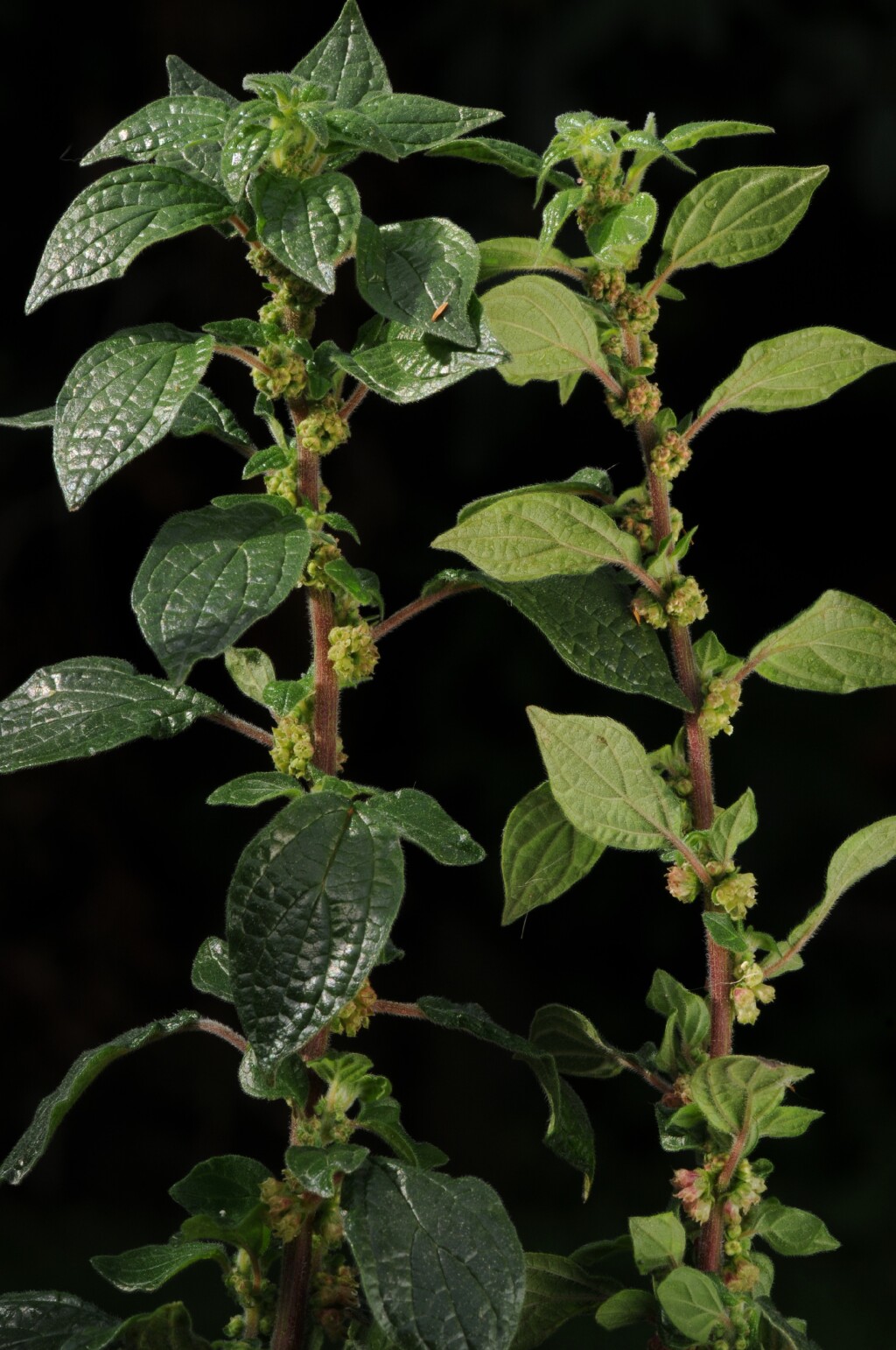Parietaria judaica
L. Wall PellitoryPerennial herb, 20–80 cm tall, woody; stems erect, densely covered in hooked hairs and scattered glandular and curved hairs. Leaf-lamina lanceolate, elliptic, ovate or rhombic, usually to 2.6 cm long and 9 mm wide, midrib dividing into 3; base cuneate to narrowly cuneate; apex mostly apiculate, sometimes obtuse, midrib divided into 3. Inflorescence a 3(rarely 5)-flowered cyme; central flower female; lateral flowers bisexual; common subtending bracts 7, united in basal third to half, forming campanulate involucre, a very delicate reticulate venation visible; perianth c. 2 mm long in female flowers, 3–3.5 mm long in bisexual flower; stigma on a long style. Achene c. 1.2 mm long, c. 0.8 mm wide, distinctly asymmetric, hard, not crushed or crumbled; apiculum absent. Flowers Oct.–Apr.
VVP, GipP, WaP, Gold, CVU, NIS. Also naturalised WA, SA, Qld, NSW, Tas. Native in western Asia and southern Europe. Naturalised in New Zealand, North and South America. A weed predominantly in urban areas, where locally common in paths, walls, wasteland, and rocky areas in degraded creeks.
Leaf shape is quite variable between plants but relatively consistent within individuals: leaves range from almost lanceolate and generally small, to large and rhombic, even occasionally ovate (the latter similar to those of P. debilis).
Gebauer, R. (1996). Parietaria. In: Walsh, N.G.; Entwisle, T.J., Flora of Victoria Vol. 3, Dicotyledons Winteraceae to Myrtaceae, pp. 87–89. Inkata Press, Melbourne.
 Spinning
Spinning




